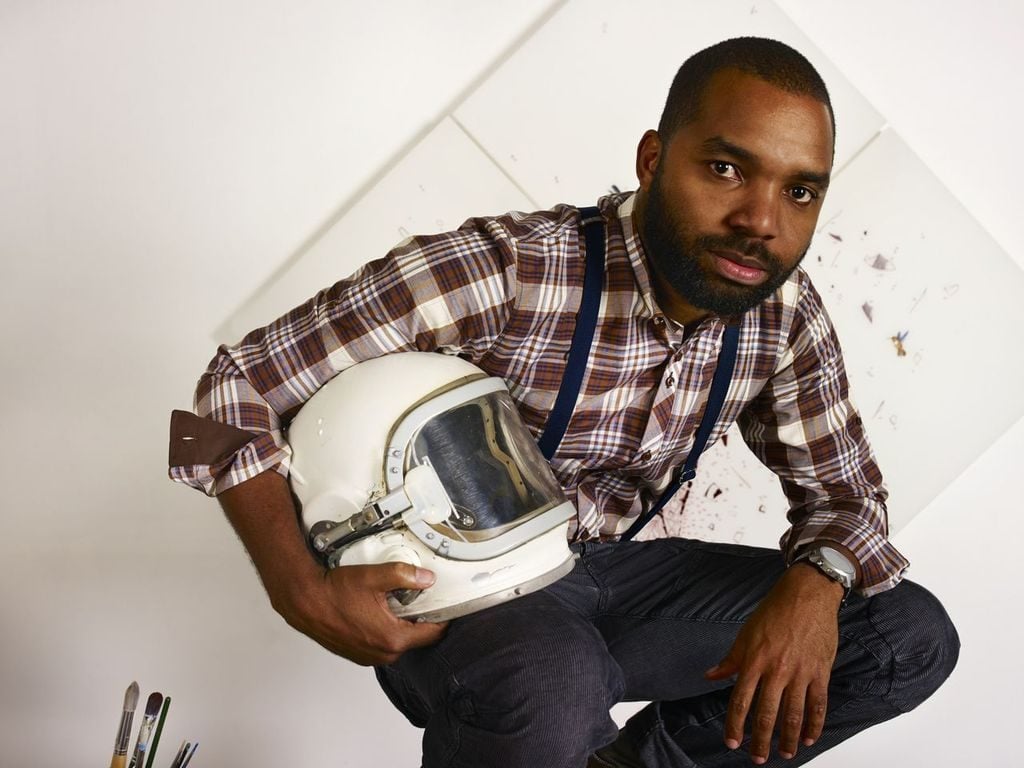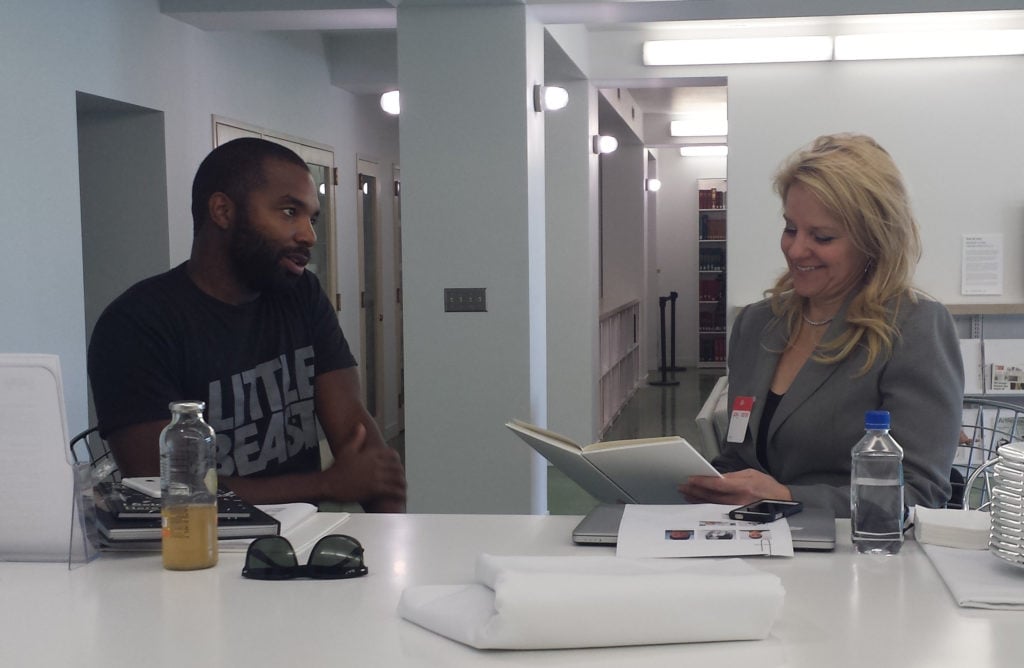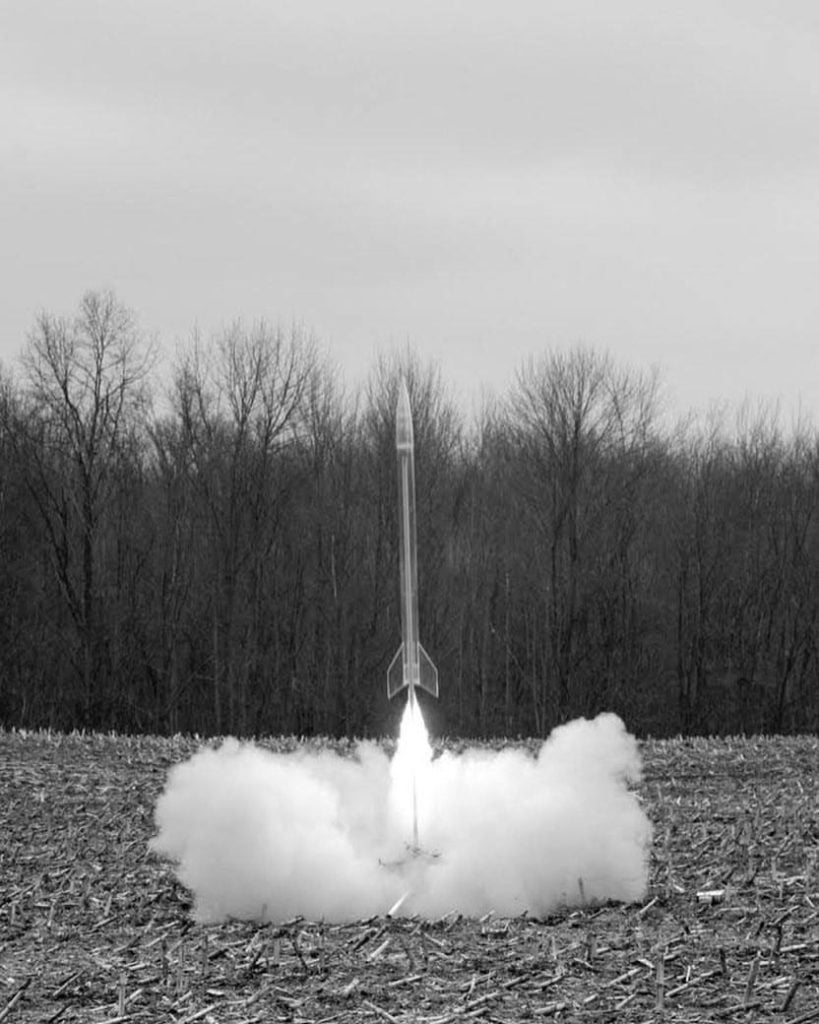Art World
Why the World’s Top Scientists Are Clamoring to Collaborate With Conceptual Artist Tavares Strachan
Strachan is the first artist-in-residence at the Allen Institute and has been collaborating for years on a mysterious project with SpaceX.

Strachan is the first artist-in-residence at the Allen Institute and has been collaborating for years on a mysterious project with SpaceX.

Sarah Cascone

Artist Tavares Strachan has trained as a cosmonaut in Russia, filled 290 craters in the California desert with neon tubes to send a message to space, and FedEx-ed a 4.5-ton block of ice from the Arctic to the courtyard of his elementary school in the Bahamas. In other words, he thinks big.
Now, Strachan is teaming up with some of the world’s top scientists at both Seattle’s Allen Institute and SpaceX in California to hatch ideas that, as hard as it is to imagine, might be even more ambitious than what he’s done before.
Strachan will serve as the first ever artist-in-residence at the Allen Institute, the research organization founded in 2003 by Microsoft co-founder and collector Paul Allen. He will visit the center every month for the rest of the year to collaborate with a wide range of experts, including neuroscientists, cell biologists, bioengineers, and computational modelers. “Having access to that kind of science just doesn’t happen in regular life,” Strachen said in a statement.
Strachan will work specifically with the Frontiers Group, a division that identifies and funds pioneers using bioscience to help make the world better. But he isn’t the only one getting something out of the deal. “We believe by having an artist interacting with our scientists, it may change the way the scientists work,” Tom Skalak, executive editor of the Paul G. Allen Frontiers Group, said in a video.
This isn’t the first time Strachan has teamed up with elite scientists. The artist, who was born in the Bahamas and splits his time between his native Nassau and New York City, has for years been working on an ambitious and highly secretive project with SpaceX, the Elon Musk-founded space exploration research facility.
The collaboration has taken place under the auspices of the Los Angeles County Museum of Art’s Art + Technology Lab, which awarded Strachan an artist grant in 2014. The $15,000–50,000 grants support technology-fueled projects that stretch the boundaries of museum work.

Tavares Strachan and Gwynne Shotwell, COO of SpaceX, in the Art + Technology Lab at LACMA. Photo courtesy of LACMA.
The resulting project has extended far beyond the expected time frame and scope. “These projects usually last a year or two. Due to the unique nature of his objective, the technology that this requires has pushed this project into its fourth year,” Joel Ferree, program director of LACMA’s Art+Technology Lab, told artnet News.
Bound by non-disclosure agreements, Strachan is keeping quiet about his work with SpaceX. (The facility made headlines last month with the successful test launch of its biggest rocket ever, the Falcon Heavy, currently making its way to the asteroid belt with a red Tesla roadster.)
But like many experiments, it’s clear the project has not unfolded as anticipated. His initial proposal was for a project was called Lift Off, which involved using alternative fuels to power handblown glass rockets made from sand from Bahamas beaches. Some six months after the initial grant announcement, however, LACMA’s Unframed reported that Strachan had switched gears, and was working on a new project about “the lost history of a pioneering astronaut.”

Tavares Strachan, Blast Off (detail), 2009. Photo courtesy of the artist.
“We had Tavares meet with some lab advisors, and he really connected with Gwynne Shotwell, COO of SpaceX,” Ferree recalled. “She said, ‘Have you thought of working on a bigger scale?'”
Ferree was also cagey on the details, but admitted that the project, in its current form, “does honor an astronaut who died trying to get into space. It ties into Tavares’s practice of working with hidden histories.”
There is one likely candidate for Strachan’s mystery astronaut: Robert Henry Lawrence Jr., the first African American astronaut. A member of the Manned Orbital Laboratory program, he died in a test flight before ever getting to space. In a recent podcast interview with Art Agency, Partners, host Charlotte Burns speculated that Strachan might be planning to send artifacts and objects linked to this lost history into space “so that this astronaut finally gets to make it.” But Strachan would not be drawn out.
While the high-tech project remains under wraps, there is at least one body of work that’s come out of the collaboration that the public might soon be able to see. Strachan has made a new series based on conversations he arranged between engineers and school children through LACMA’s program. He asked engineers from SpaceX to give lectures about their areas of expertise in the classroom and illustrated the exchanges, which he then turned into works made from calcium carbonate (essentially classroom chalk).
“The rocket scientist is in a room full of children, and there are a few boards and the rocket scientist is explaining to a group of six, seven, eight and nine year-olds what it means and how it is to get into space,” Strachan told Art Agency, Partners. “The beauty of it is being able to articulate complexity.”